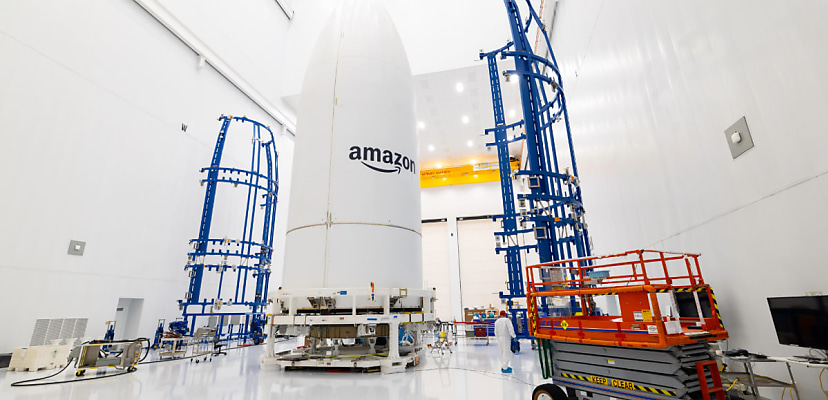Share this article on:
Powered by MOMENTUMMEDIA
For breaking news and daily updates,
subscribe to our newsletter.
Amazon has confirmed the company’s first tranche of 27 satellites designed to rival Starlink are operating as expected.

Andy Jassy, the tech giant’s chief executive, said the achievement represents an “incredible amount of invention and hard work” by his team, while the firm also announced plans to partner with defence giant L3Harris.
Amazon, on Monday (28 April), launched the Project Kuiper satellites onboard a United Launch Alliance (ULA) Atlas V rocket from Cape Canaveral and plans to begin delivering internet services later this year.
The lift-off significantly comes alongside speculation that the federal government will pick the service to replace NBN’s beleaguered geostationary satellites that provide internet to remote areas of Australia.
Amazon initially launched two prototype satellites on a ULA rocket in October 2023 and hailed the mission as a “100 per cent success”.
The new constellation of spacecraft features significant upgrades, including phased array antennas, solar arrays and optical inter-satellite links.
Over the next few years, Kuiper and ULA teams will conduct seven more Atlas V launches and 38 launches on ULA’s larger Vulcan Centaur rocket.
Moving forward, an additional 30-plus launches are planned using launch providers Arianespace, Blue Origin, and SpaceX to complete a final constellation of 3,200.
Reports, though, suggest Amazon must deploy half the constellation by July 2026 under rules tied to its licence and the rest by July 2029.
On Tuesday, Amazon followed up on the news that it had made contact with the spacecraft by announcing ambitious plans to work with L3Harris to develop military communication solutions.
L3Harris’ president of communication systems, Sam Mehta, said the defence giant sees potential in partnering with Project Kuiper at the start of its development.
“We can actually get in on the ground floor and help influence some of the requirements since they’re at the beginning of their launch cycle,” he said. “This is the right time to be able to go and influence those requirements.”
Amazon believes its Amazon Web Services (AWS) cloud infrastructure arm will give it an advantage over Starlink by enabling it to offer customers advanced data processing and analysis capabilities.
Mehta added that it could one day enable soldiers on the front line to access critical intelligence via handheld radio with “the same security and resilience and encryption that they would if they were operating in a closed tactical network”.
Space Connect reported earlier this year how Project Kuiper is speculated to have emerged as the “leading candidate” to succeed the two NBN Sky Muster spacecraft, although a decision still needs to be signed off by federal government ministers.
The GEO satellites launched in 2015 and will be decommissioned in 2032.
However, customers have long complained that the service isn’t good enough to consistently handle video, and reports suggest thousands of customers have defected to Starlink.
Low-Earth orbit (LEO) satellite constellations, such as Starlink, offer quicker services than traditional geostationary satellites, such as NBN Sky Muster, because they are closer to Earth.
The lower height, though, also means LEOs effectively cover a smaller area and, therefore, need to operate in larger, connected constellations to be effective.
Starlink, a subsidiary of SpaceX, has the advantage of being able to launch thousands of satellites without paying external customers because it operates its own reusable rockets.
It’s currently thought there are more than 8,000 Starlink satellites in orbit, with plans for a constellation of 40,000.
Late last year, Optus joined Telstra in offering customers Starlink via a satellite dish, and both telcos signed up to launch straight-to-mobile services when they become available.
This article was originally published on Cyber Daily’s sister brand, Space Connect.
Be the first to hear the latest developments in the cyber industry.